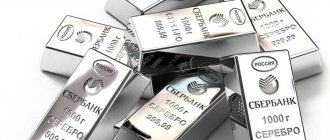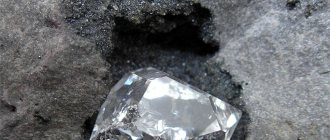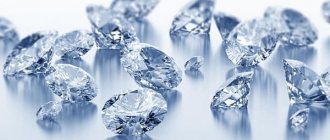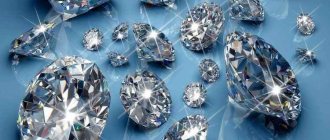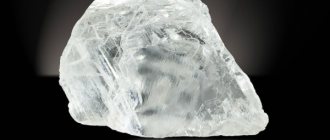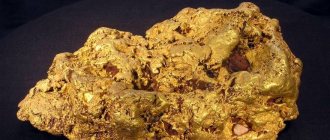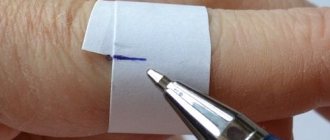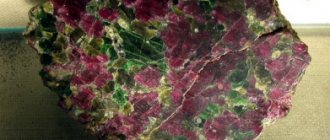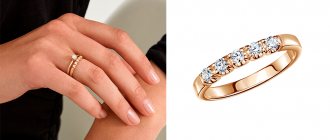Minerals and minerals tend to end up in the depths of the earth. But people have a need to use various minerals, including diamonds. Therefore, with the development of technology, the development and transition to artificial stone extraction begins. Artificial diamonds are practically no different today from natural minerals. It is difficult even for gemologists to distinguish the stones by appearance, which indicates a high level of similarity.
Artificial diamond
WHAT IS A SYNTHETIC DIAMOND
At the end of the 18th century, scientists discovered that diamond is a form of carbon. This marked the beginning of numerous attempts to recreate the gemstone from available materials such as coal or graphite.
How did artificial diamonds come about?
Since the 19th century, many famous physicists and chemists have announced the successful completion of experiments in growing diamonds. True, none of these statements have been documented.
Only in 1927, the Soviet physicist O. Leypunsky made a breakthrough by calculating the conditions necessary for the process. Further research and experiments were carried out in parallel in the USSR, USA and Switzerland.
Synthetic diamond
HPHT and CVD
The first working installation for crystal synthesis was created and patented by the Swede Balthasar Platen. He learned his method from nature.
Natural diamonds are formed at depth, in the hot mantle of the earth's crust with a temperature of more than 1000°C and a pressure of about 50,000 atmospheres.
Platen recreated similar conditions: a cell with nickel, cobalt and iron was heated and pressed with a multi-ton press. In this case, metals acted as a catalyst, and presses simulated pressure of thousands of atmospheres.
This method is called HPHT (High Pressure High Temperature) - high pressure, high temperature. The method is imperfect, but simple and inexpensive. Today it is used for the mass production of industrial diamonds and diamond dust.
In the 60s of the 20th century, a more advanced method was invented: CVD (Chemical vapor deposition) - chemical vapor deposition. The essence of the technology is the crystallization of diamonds from hydrocarbon gas onto a substrate grown by the HPHT method. CVD allows for the creation of larger, purer crystals.
HPHT
Nano diamonds
In addition to HPHT and CVD, there are other, more narrowly focused technologies:
- detonation synthesis of diamonds - high temperatures and pressures are obtained due to the detonation of graphite. As a result of the decomposition of carbon-containing substances, nanocrystals are formed;
- ultrasonic synthesis of nanodiamonds - allows you to synthesize microcrystals from a suspension of graphite in an organic liquid at normal pressure and room temperature.
We recommend: FIANIT - a laser part and a “poor man’s diamond”
Similarities and differences
For a long time, HPHT diamonds and CVD diamonds differed from natural ones in size - under artificial conditions it was impossible to grow a stone larger than a carat. But many companies continue to work to eliminate this shortcoming.
Nano diamonds
Today, stones with the following characteristics are grown under artificial conditions:
| size | 6 or more carats |
| hardness | 10 on the Mohs scale |
| refractive index of light | 2,417 — 2,419 |
| color | D, E, F |
| purity | from pure IFs to technical SIs |
| type | mostly II (less than 0.001% nitrogen) |
Artificial diamonds have differences from natural ones:
- “artificial” may have metal inclusions left over from production;
- on colored stones you can see growth sectors that appear due to accelerated crystallization processes;
- Natural and artificial crystals luminesce differently in UV rays.
These differences can only be seen with specialized equipment. Therefore, suppliers and sellers of artificial diamonds are required to indicate on the product tags information about the origin of the crystals.
The price per carat depends on the properties of each stone, but in any case, the cost of even the best synthetic diamond will be 2 times lower than a natural one.
CVD
Advantages and disadvantages of artificial diamonds:
| Advantages | Flaws |
|
|
Growing Crystals
If you consider the possibility of growing stones as an interesting experience, and not as a way to get rich, then you can go the other way and grow not stones, but multi-colored crystals from salt, sugar or copper sulfate.
To grow salt crystals, make a saturated solution by adding salt to a glass of warm distilled water until it stops dissolving. To obtain multi-colored crystals, water can be tinted with food coloring. After this, hang a small salt crystal over the glass on a string so that it is completely immersed in the solution. Within a few days the crystal will grow. Copper sulfate crystals are grown in the same way.
Crystals are solids, molecules or atoms that form a crystal lattice. They can be grown with the help of the crystallization process of solutions, vapors or melts, which begins under certain conditions , say, supersaturation of steam, supercooling of a liquid.
You will need
- — distilled or boiled water;
- — chemical glassware for preparing the solution;
- — a laboratory filter, one that can be replaced with a blotter or cotton wool;
- - a blank sheet of paper.
Instructions
1. To grow a beautiful crystal of the correct shape, you need a clean solution. To prepare it you will need: distilled or boiled water, chemical glassware for preparing the solution, a laboratory filter, one that can be replaced with a blotter or cotton wool, a clean sheet of paper.
2. It takes a lot of time for a crystal to grow huge and beautiful. This is a difficult and long process, one that requires caution and patience. First you need to prepare a small crystal - a seed. As soon as the first crystals appear, you need to choose those that have a particularly true shape or that you like the most.
3. Fill the beaker halfway with warm water and add salt in small portions. Mix the solution after every fraction of the substance. As soon as it stops dissolving, stir thoroughly again. Filter the prepared solution into another glass where the crystal will grow, and cover it with paper. In just a week the crystal will noticeably grow.
4. Care should be taken to ensure that when the solution evaporates, the upper part of the crystal is not exposed to air. It will ruin him. To prevent this from happening, add the solution to the container as needed.
One hundred percent accurate information regarding the authenticity of the stone can be provided to you by an extraordinary expert who knows a lot about his business. But there are still situations when you urgently need to determine the authenticity of a jewelry store yourself. Without the appropriate equipment, it is unlikely that you will be able to cope with this, however, there are some tests that will help you at least identify very obvious fakes. Such tests are based on the fact that real diamonds can both conduct heat and “destroy” light.
Instructions
1. If you are trying to “test” a stone without a setting, then try placing it lightly on any printed text. If it is a genuine diamond, then you will not see the letters through the stone. Diamond breaks light too powerfully, so it is not suitable as a magnifying glass. But through other, less expensive stones, the symbols will be wonderfully visible.
2. If you illuminate a stone with a light source similar to an LED, then in primitive stones you will see a point of light on the other side of the stone. If it is a genuine diamond, then only a clear halo will be reflected around the rim of the stone.
3. Try breathing on a stone and immediately see if the stone becomes foggy. All stones will become clouded for a moment, but a reliable diamond will invariably remain clear. Please note that the stone, the one called mussanite, also withstands such a test remarkably well, therefore, to eliminate mistakes, it is best to go to an excellent jeweler.
4. You also need to be extremely observant to see the stone. In real diamonds, small particles of other minerals may be visible that were pressed into the stone during its formation. However, there cannot be any bubbles in a real stone.
5. Look at the edges of the stone - if they are rounded or worn, then it is glass. If the stone is very clean, without inclusions, then it is also not a diamond, but rather light quartz.
6. It is also important to understand the fact that a reliable diamond cannot be cheap and in no case give in to the temptation to buy a “genuine” diamond for ridiculous money. As usual, a diamond in a piece of jewelry is inserted so that its back is open and accessible for inspection.
7. Do not test the diamond by scratching the glass: yes, this stone is strong, but it is absolutely permissible to damage it using this method. But unnatural stones, which are now absolutely safely “grown” in production, will be difficult to distinguish even for an expert.
Video on the topic
Probably, the physics and chemistry lessons at school were especially exciting, in which various skills were demonstrated. crystals at home . They make good souvenirs.
You will need
- - salt,
- - water,
- - cup,
- - thread,
- - paper.
Instructions
1. Remember that growing crystals is a long process. Be patient and decide by what date you would like to receive the crystal. On average it will take you two to three weeks.
2. Decide what substance you will grow your crystal from. Various salts (including bath salts) and even sugar will do. Salt crystals grow better, are stronger and have different colors, which is why we will talk about them further. So, from traditional table salt you will get white, transparent crystals , from copper sulfate - blue-blue, from copper - red. Do not use various unnatural dyes - they will slow down the reaction and change the color of the solution, but not the crystal itself.
3. In the first stage of your experiment, you are required to obtain an intensive solution of table salt (NaCl). To do this, pour salt into fairly warm water (approx. 60°C) and stir thoroughly. It is advisable to use distilled water (if you are growing copper sulfate, by all means). When the salt stops dissolving and begins to precipitate, it means the desired saturation has been achieved. On average, 35-40 g of salt are consumed per 100 g of water. Strain the solution to get rid of debris and excess salt.
4. Take an embryo (seed), i.e. a large crystal of the salt you are using. Place it at the bottom of a glass with an intensive solution or fasten it to a thread and lower it into the solution. It is allowed to take several embryos.
5. Wrap your container in something warm so that the solution cools slowly, and cover it with a sheet of paper to prevent dust from getting into the water. After which the 2nd, longest stage in growing crystals begins - waiting.
6. If you did everything correctly, then after 3-4 days the embryo will not dissolve, but will begin to grow slowly. As the water evaporates, the crystal will increase in size. Control the fluid level. If necessary, add a new solution once every week or two. It is better not to take the growing embryo out of the solution when it is unnecessary. If you follow all these rules, after some time you will receive a beautiful crystal, one that will become a strange decoration for your home or a beautiful gift for your friends.
Video on the topic
Since those ancient times, when society first learned about the existence of a transparent, colorless stone, not inferior in its hardness only to hardened steel, a lot of water has already flowed under the bridge. But despite this, the diamond has not lost its original value; on the contrary, today virtually everyone knows about the existence of this precious stone and its remarkable beauty. Indeed, a diamond has a lot of facets; it is not difficult to draw this fascinating stone.
You will need
- - Personal Computer;
- - Photoshop program.
Instructions
1. Launch Photoshop on your computer and open a new document with the following settings: 350 x 350 pixel resolution and white background. Now use the key combination “Shift+Ctrl+N” to create a new layer and set the foreground color on it (gentle blue).
2. Draw a rectangular shape (for this you will need the Pen Tool). In appearance, this figure should resemble the silhouettes of the future diamond : an acute angle at the bottom, two obtuse angles on the left and another acute angle opposite them. Right-click on the resulting figure with the right mouse button. After that, select the “form selected area” option and set the feathering parameters to 0 pxl, confirming that your actions are correct by clicking “OK”.
3. Using the Paint Bucket tool, fill the shape with the color that was set for the foreground.
4. Select a rectangular area: one side of the rectangle should be a bisector coming from the bottom corner, and the second, running parallel to it, should be slightly to the right of the right corner of the figure. Trim the outlined part: press DELETE or fill this area with white.
5. Using the keyboard shortcut “Ctrl+J”, duplicate the layer, and then rotate it horizontally using the following sequence of actions: Edit > Transform > Flip Horizontally.
6. Merge the two layers by pressing “Ctrl+E”. A diamond begins to emerge .
7. To create a new layer, press the following key combination: Shift+Ctrl+N. In its parameters, set black as the foreground color. After that, select the drawn diamond , then go to the “Editing” - “Stroke” section and click “OK”.
8. Make a new layer and, using the Pen tool, draw a horizontal line with two lines, and later fill this area with black.
9. Make a new layer and, using the Pen Tool, draw the first vertical line with two lines. After that, choosing “Make Selection”, fill the vertical line with black. Similarly, draw a second vertical line and highlight it with black.
10. Open the newest layer. Edit the settings there, setting the foreground color to white. After that, take a brush (parameters 200 px) and give the diamond a shine.
11. Delete the white layer and merge all layers by pressing the key combination “Ctrl + Shift + E”. Our diamond is ready!
Video on the topic
Note!
Continuously preserve the metamorphoses made!
Helpful advice
Copy the drawn diamond several times, continuously opening the newest layer, and change the dimensions of the diamond. Place these stones in different places and at different angles. Filling out the document little by little, you can draw a diamond wallpaper.
Diamond is an expensive stone, the most precious of all existing ones. In nature, it occurs as a mineral, the distinctive property of which is its exceptional hardness. Diamond jewelry has been and remains the most coveted. Only a gemologist or a specialist in the field of jewelry can verify the authenticity of this stone. However, if you need to buy a diamond without involving experts, use several tests to verify its authenticity.
Instructions
1. Place the stone in clean water. With the help of this test, you can determine the integrity of a diamond. If the upper part of the stone is authentic, and the lower part is a fake, then the junction of these parts will be visible in the water.
2. Watch the sparkle of the diamond. It should shimmer with shades of gray. If it sparkles with all the colors of the rainbow, then it is a low quality stone or a fake.
3. Breathe on the stone. A genuine diamond will not become cloudy, but a fake diamond will become cloudy for a few seconds.
4. Rub the diamond carefully with sandpaper. If scratches occur during this process, then it is a fake. However, such paper should not contain diamond chips; on the contrary, it is possible to spoil the stone.
5. Weigh the stone. Zirconium, which is often passed off as a diamond, is much heavier than a gemstone. You can use this verification method if you have a table that shows the correspondence between size and weight in grams or carats.
6. If an expensive stone is in a frame, check whether it matches the rank of the stone. A reliable diamond is not set in an inexpensive setting. It should have a mark indicating the quality of the metal.
7. You can also test the authenticity of the stone in a laboratory. Put the diamond under ultraviolet light. A bright blue glow indicates its quality. Real diamonds are not visible in X-rays. The materials from which counterfeits are made have a certain degree of impermeability to such radiation.
8. If you are not sure that even with the help of a testing system you can distinguish a genuine diamond from an unnatural one, contact a qualified expert. There are different ways to identify natural and unnatural stones, which are close in chemical composition to natural ones.
Note!
During the growth of the main crystal, other crystals may appear and grow in the solution, which must be removed at least once every two weeks.
Helpful advice
It is best to filter the solution through a laboratory filter, but if there is none, then you can use a blotter or cotton wool. The denser it is, the purer the liquid will be.
In terms of their physical properties and chemical composition, precious stones obtained synthetically are practically no different from natural ones. Not all products sold in jewelry stores contain natural stones. And that's quite normal. Let's look at how to open your own business growing ruby crystals at home.
The content of the article:
- Growing with limited salts
- Auguste Verneuil method
- Determining the competition in this area
- Registering home production
- Promotional Events
- A detailed method for growing crystals at home!
The main problem is that most natural stones do not have all the necessary characteristics to show off in jewelry. Stones obtained in factory or laboratory conditions have almost the same characteristics. In addition, synthetic production of jewelry is cheaper than mining natural jewelry in deep and life-threatening mines.
Growing with limited salts
Potassium alum is suitable for this method. It is best to grow crystals from copper sulfate at home. They don't grow well from regular salt. But copper sulfate is easy to buy, and very beautiful blue artificial gemstones grow from it.
1. Prepare the container. We will make a saturated salt solution in it. Pour a few tablespoons of salt, fill it with water and stir. Add salt until it stops dissolving. Use hot water to avoid mistakes with the proportions. There are solubility curves for different salts. They show how many grams can be dissolved in 100 ml of water at a certain temperature.
Solubility curves
2. Filter the solution. This step is very important, especially if you buy copper sulfate at a garden center. If the solution is dirty, the crystal will grow with defects. Leave the solution for a day so that excess crystals fall out of it. They settle at the bottom of the glass and serve as a seed for us (the main elements on which new ones will grow).
3. We tie the crystal to the fishing line. We wrap the fishing line around a pencil and hang this device on a glass with a saturated solution. Over time, the water evaporates, the saturation of the solution increases. Excess substance that cannot dissolve settles on our product.
4. Once every two weeks, add a saturated solution to the glass. Why do this? Over time, the water evaporates and at some point during growth there will not be enough water and growth will stop.
Important! The added solution must be the same temperature as the solution where the crystal is growing. If it is the highest, we can ruin everything.
5. After three months, remove the crystal and dry it with a napkin.
6. Cover the product with 1-2 layers of colorless nail polish. This is necessary so that it does not dry out and lose its shine. After drying, the product can be handled by hand.
These are some wonderful rubies you can grow at home!
Auguste Verneuil method
To obtain ruby in the laboratory, a device invented by the French scientist Auguste Verneuil more than 100 years ago is used. On the Internet you can find information on the method of growing ruby and more simplified equipment of the French scientist, which can be used at home. Using Auguste Verneuil's method, in 2-3 hours you can grow a ruby crystal weighing 20-30 carats. It should be noted that this method also applies to the production of topaz of various shades (yellow, blue, white and transparent).
Drawing of the Verneuil apparatus
To obtain a product weighing 30 carats, you will need 3 kW*hours of electricity and 3 hours of time. In monetary terms, this will be less than $1. To produce one crystal, you need 0.2 g of chromium oxide and 6 g of aluminum oxide powder, the cost of which will be no more than $0.50.
You don’t need to be an economist to understand that even when selling an unprocessed crystal, a jeweler will make a very substantial profit. By pleasing your wife with home-grown topazes and rubies, you will receive incomparable psychological “dividends”.
Download a detailed description of the Verneuil method
Determining the competition in this area
Entering any store, you will notice that prices for jewelry with stones are quite high, despite their synthetic origin, therefore, market saturation is still very far away. Marketing research shows that in Russia you do not risk facing much competition. Even if several thousand enterprising people get into such a business, they will not make any special changes to this market segment.
Registering home production
We grow at home. There are no plans to create laboratory conditions. This is a simple mini-business. Sales will be carried out through souvenir shops and groups on social networks. You can create your own website. Our products will be bought as gifts as precious souvenirs. For this option, it is enough to register as an individual entrepreneur.
If you are planning to expand your business and open your own laboratory for the purpose of further sales of artificial rubies to jewelry factories and stores, open a limited liability company.
Promotional Events
The most important step is to find ways to realize the crystals. How to establish a sales market?
1. Contact an advertising agency. Specialists will find ways to interest potential buyers.
2. Create and promote a group or page on social media. networks. Invite friends, be active in groups that sell handmade goods. Additionally, you can create your own website.
3. Bet on exclusivity. You can try to negotiate with souvenir shops about the supply of crystals. Hand out flyers in the city center. Tell your friends about your business.
A detailed method for growing crystals at home!
This is how synthetic diamonds are grown for industrial purposes
Diamonds have attracted humanity since ancient times. The extraordinary beauty of these stones has led to their use to create various jewelry. However, later people discovered other useful properties of diamonds - their unique strength and hardness. To meet production needs, nature did not create much of this material, so people came up with the idea of producing diamonds artificially.
WHERE SYNTHETIC DIAMONDS ARE USED
High tech
The main areas of application of artificial diamonds are industry and high technology:
- cutting tool - artificial diamonds are one of the hardest substances;
- thermal conductors - the combination of high thermal conductivity and minimal electrical conductivity makes artificial stone indispensable as a heat sink for high-power lasers and transistors;
- optics - natural diamonds are not suitable for these purposes, as they have too many defects;
Moissanite
Jewelry industry
The technological breakthrough has raised the question of the need for jewelry and diamond mining companies to control the flow of artificial stones into the jewelry market. Now the growth of their sales is limited legally. In addition to this, some companies are opening their own production of artificial jewelry diamonds.
We recommend: How to distinguish SAPPHIRE from a FAKE
That's exactly what De Beers did. The diamond mining corporation refused to engage in diamond production for a long time. However, in 2022, she created a subsidiary, Lightbox Jewelry, which began selling artificial stones under its own brand.
Alternative names in science and common people
In the scientific world, synthetic diamonds are named after the technology involved in their production. There are HPHT diamonds, which means created under high pressure and temperature. And CDV diamonds stand for chemical vapor deposition. We will tell you about the technologies themselves further.
But artificial diamonds are not always its complete copy. There are such types as cubic zirconia, moissanite, rhinestone, ferroelectric, rutile, fabulite and cerussite. Zirconium dioxide is the most common “fake” and has nothing in common with a real diamond.
Ignorant people call an artificial diamond a cubic zirconia, which is a big mistake. Of course, it perfectly imitates diamond due to its strength and refraction. Some experts cannot “by eye” distinguish it from the original stone. Therefore, they are widely used in the jewelry industry.
WHAT ARE ARTIFICIAL DIAMONDS CALLED?
According to the prevailing stereotype, “artificial” is something only externally similar to the original. But imitation does not always mean fake.
Nexus
Since modern grown diamonds are identical to natural ones, marketers propose replacing the established term “artificial diamond” with wording that would reflect the nature of the origin of this stone more accurately:
- "created";
- “grown in a laboratory”;
- “created in a laboratory.”
Artificially grown "diamonds"
There are other types of artificial stones. They are close in structure to diamonds, but are slightly inferior in terms of hardness characteristics and light refractive indices.
- Moissanite. In nature, it forms small colorless crystals with a diamond luster - silicon carbide. But the natural mineral is extremely rare. Therefore, when we talk about moissanite, we usually talk about artificial carbocorundum. The stone is very similar to diamond (its refractive index is even higher: 2.65 - 2.69), and the hardness is only slightly lower (8.5-9.25 on the Mohs scale). Moissanite is also heat sensitive (it changes color when heated above 65°C).
- Nexus. Stone is created by combining carbon with other components. It is almost as strong as diamond.
- cubic zirconia Created by scientists from the Physical Institute of the USSR Academy of Sciences (FIAN), after whom it was named. Cubic zirconias are used to imitate diamonds, with which they can easily be confused due to their similar refractive index (2.15-2.25).
cubic zirconia
When translated into foreign languages, cubic zirconia is often called zircon or zirconium, which is not correct, since zircon is a mineral with different physical characteristics, and zirconium is a chemical element.
Imitation diamonds
Separately, there are crystals that imitate only the appearance of a diamond. They are significantly inferior in strength and do not have a diamond shine (refractive index is less than 1.9).
- Spinel (degussite). Natural spinel is rare and has a crimson color. Therefore, to imitate diamonds, artificial stones are used, which can be given any color.
- Crystal is high quality glass.
- Swarovski rhinestones are small stones with perfectly equal edges and various optical effects.
- White sapphire is an artificial colorless sapphire with high strength.
- Rutile - its refractive index is even higher than that of diamond, however, due to the high effect of birefringence, the back edges of the crystal are clouded.
Spinel
Origin story
Set of jewelry with artificial diamonds
The production of synthetic diamonds began in 1797. The first specimens cannot be called successful, since they did not have the properties of a natural mineral. In 1926, a positive result was achieved, but the technology required improvement.
It was not until 1954 that the first synthetic crystals were successfully grown in Sweden. These were small stones for industrial use. By the early 70s of the 20th century, the technology for producing large pieces of jewelry quality had been developed. Soon, laboratories began to produce not only colorless crystals, but also multi-colored specimens.
HOW TO GROW AN ARTIFICIAL DIAMOND AT HOME
It will not be possible to grow an artificial diamond using carbon at home, as this will require high temperatures and pressure.
We recommend: MAJORICA PEARLS from the hot island
At much lower cost, you can create your own transparent crystal from inorganic salts, for example, potassium alum.
Alum alum can be bought at a pharmacy or soap store at a price of 220 rubles per 1 kg.
Areas of application and opportunities
About 80% of created diamonds are used in industry and other areas of human life. For example, the production of bearings, tips for drills. Small pebbles can be used to make diamond chips and powder, which are used to coat knives or grinding tools.
Synthetic diamond plays an important role in electronics. They are used to create needles and layers in microcircuits and counters to maintain thermal conductivity and resistance. And this is only an approximate market where high-quality artificial stones can be sold.
For the production of CVD diamonds, the most important role is played by high-tech areas. They are necessary to create mobile phones. They are used to produce laser beams used in medicine: they are used to treat many deadly diseases. Therefore, the role of synthetic stones is enormous.
Proven technologies and systems of the future
We'll tell you how to grow a diamond in the laboratory. A modern plant for their production uses two technologies. The first in popularity and occurrence is HPHT. It is based on heating carbon under high pressure. Its main advantage is the relatively low cost of the resulting stones.
How diamonds are made using the CVD method can be understood if you imagine a gas chamber. Inside is hydrocarbon gas, deposited on a silicon wafer by heating or using microwave radiation. As a result of the reaction, a plate 2-3 mm thick is obtained. Therefore, its main field of application is optics and electronics.
In some laboratories that grow synthetic stones, the “explosive” technology for producing diamond chips is common. It is based on the fact that an explosion creates high pressure and releases a lot of heat. The main thing is to quickly lower the camera into water to prevent the diamond from turning into graphite.
The problem with the “explosive technique” is that the precious chips are inside the graphite. It must be washed out by boiling in nitric acid for 24 hours at a temperature of 250 degrees.
Modern scientists are trying to obtain diamonds using ultrasonic cavitation, but this technology is still in testing mode and does not always give the expected result. If you are interested in trying to create a gemstone yourself, then read the article “How to make a diamond at home.”
